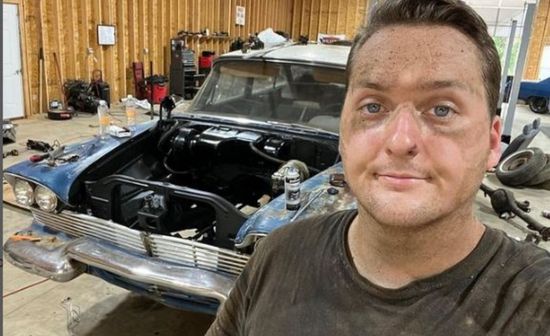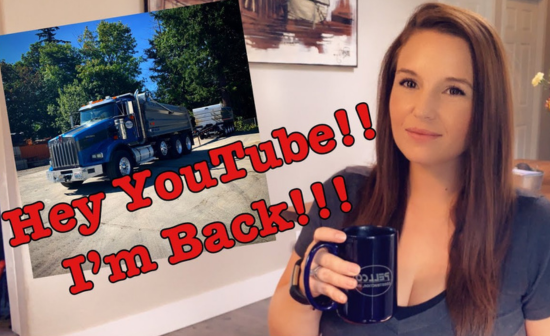Dylan McCool (age 26) is an inspiring YouTube star who has gained immense success in his passion for restoring classic cars. Dylan has become an icon in the classic car restoration world, with over 550 thousand subscribers on his YouTube channel, a Facebook page, and an Instagram account with over 10,000 followers each.
His journey began when he found a 1973 Challenger sitting in a field for 35 years. He has an estimated net worth of $1.2 million.
After documenting the restoration project through 30 videos on his YouTube channel, Dylan’s followers took an immediate interest in the rusty old Challenger.
His first video currently has over 11 million views, a testament to the community’s enthusiasm for this era of muscle cars.
This blog post will discuss Dylan’s journey, his success, and how Classic Industries helped him get the restoration parts he needed to take his Challenger from a rusty yard ornament to a running, driving, and muscle car.
Car Restorations
Dylan McCool is a YouTube star who has made a name for himself in the car restoration industry. He has restored numerous classic cars, from personal to community projects. This section will categorize Dylan McCool’s car restorations into three categories: personal, client, and community. We will discuss some challenges he faced while restoring each car and how he overcame them. We will highlight each car’s unique features and how Dylan McCool incorporated them into the restoration process.
Do check out: The Detail Geek: Transforming Cars One Video at a Time
Personal Life
Dylan’s personal life is private and understandable considering that he is a YouTube star. We haven’t been able to gather any information about who he’s dating but one thing we know for sure is that Dylan Mccool’s wife is pregnant.
The couple is expecting a baby in august of this year.
Dylan McCool Personal Projects
Dylan McCool’s car restorations can be divided into three categories, the first being personal projects. Some of his restored cars include an abandoned Dodge Challenger that was rescued. Each project had unique challenges, but Dylan McCool was up to the task. For instance, the abandoned Dodge Challenger required a complete engine, transmission, and interior overhaul. While working on the abandoned 1951 Ford Custom, Dylan McCool had to source parts no longer in production, like the original flathead V8 engine.
On the 1958 Plymouth Savoy, Dylan McCool had to restore the car’s original paint job, a two-tone red and white colour scheme.
Client Projects
The second category of Dylan McCool’s car restorations is client projects. One of the most notable projects in this category is the restoration of a 1971 Chevy Chevelle SS. This project required Dylan McCool to meet specific requirements set by the client. For example, the client wanted the car to retain its original engine and transmission, which was challenging, considering it had been sitting in a garage for over three decades. Dylan McCool had to work with experts to ensure the car was restored to its former glory while meeting the client’s specifications.
Community Projects
The third category of Dylan McCool’s car restorations is community projects. One notable example is the restoration of a 1967 Pontiac Firebird for a local high school. This project had a significant impact on both the car and the community. The car was restored to its original condition and donated to the school, which used it as a teaching tool for its auto shop program. Dylan McCool leveraged his skills to overcome the challenges of working on a community project. For example, he had to work with a team of volunteers with varying experience in car restoration. Dylan McCool ensured he completed the project on time and to the satisfaction of all stakeholders involved.
Georgia Mopar Stash
One of Dylan McCool’s most exciting projects is the Georgia Mopar Stash, which he documented in a YouTube video. The stash is a hoard of classic muscle cars, including iconic models produced by Mopar’s Dodge and Plymouth divisions in the late 1960s and early 1970s. The stash includes Dodge Chargers, Challengers, Plymouth Road Runners, and more. There are at least 30 second-generation Dodge Chargers from all three model years (1968-1970).
The history and significance of the Mopar Stash are captivating. The collection includes rare and hard-to-find cars that are often beyond the reach of most classic car enthusiasts. Restoring cars from the Mopar Stash comes with unique challenges, and Dylan McCool was up to the task. He approached each restoration project with careful planning and execution, ensuring that he restored each car to its original condition.
Despite the challenges of restoring cars from the Georgia Mopar Stash, Dylan McCool has produced some of the most beautiful and sought-after muscle cars. His attention to detail and expertise in classic car restoration has enabled him to restore these cars to their former glory. If you’re a classic car enthusiast, the Georgia Mopar Stash is a must-see collection that will leave you in awe.
Restoration Process of Dylan McCool
Restoring classic cars can be daunting, but Dylan McCool has taken on the challenge with his ’58 Plymouth Savoy. He has documented the entire process on his YouTube channel, so let’s look at his five-step process for restoring a classic car, from the initial assessment to the final product.
1. Assessment
The first step in car restoration is assessing the vehicle’s condition. This involves inspecting the bodywork and interior for signs of rust or damage and looking under the hood to check the engine bay and suspension components. McCool began by assessing the condition of the ’58 Plymouth Savoy and deciding what he would need to do to bring it back to its former glory.
2. Planning
Once you have assessed the car’s condition, it’s time to plan the restoration process. You must consider factors such as budget, time, and resources. For his project, McCool sourced parts from Classic Industries and had to consider the regulations and laws he would need to adhere to drive his finished vehicle on the roads.
3. Disassembly
The next step is to disassemble the car, removing all the parts that need replacing or restoring. McCool removed the engine, transmission, and various components from the engine bay and suspension.
4. Restoration
The fourth step is to begin the restoration process. This could involve replacing parts, as McCool did with his carburettor, or refurbishing existing components. He used a buffing wheel, sanding block, rust reformer, and acrylic enamel to restore the engine bay.
5. Reassembly
The final step is to reassemble the car and make it street-legal. McCool replaced the 318ci V8 engine with a Hemi and swapped out the 3-speed transmission for a 4-speed. He then checked the local laws and regulations to ensure his car was safe and compliant.
Conclusion
Dylan McCool is an inspiring YouTube star who has gained immense success for restoring classic cars. He has documented the process of restoring a classic car, from the initial assessment to the final product. Despite the challenges, Dylan has restored classic cars to their former glory, making him an icon in the classic car restoration world.



